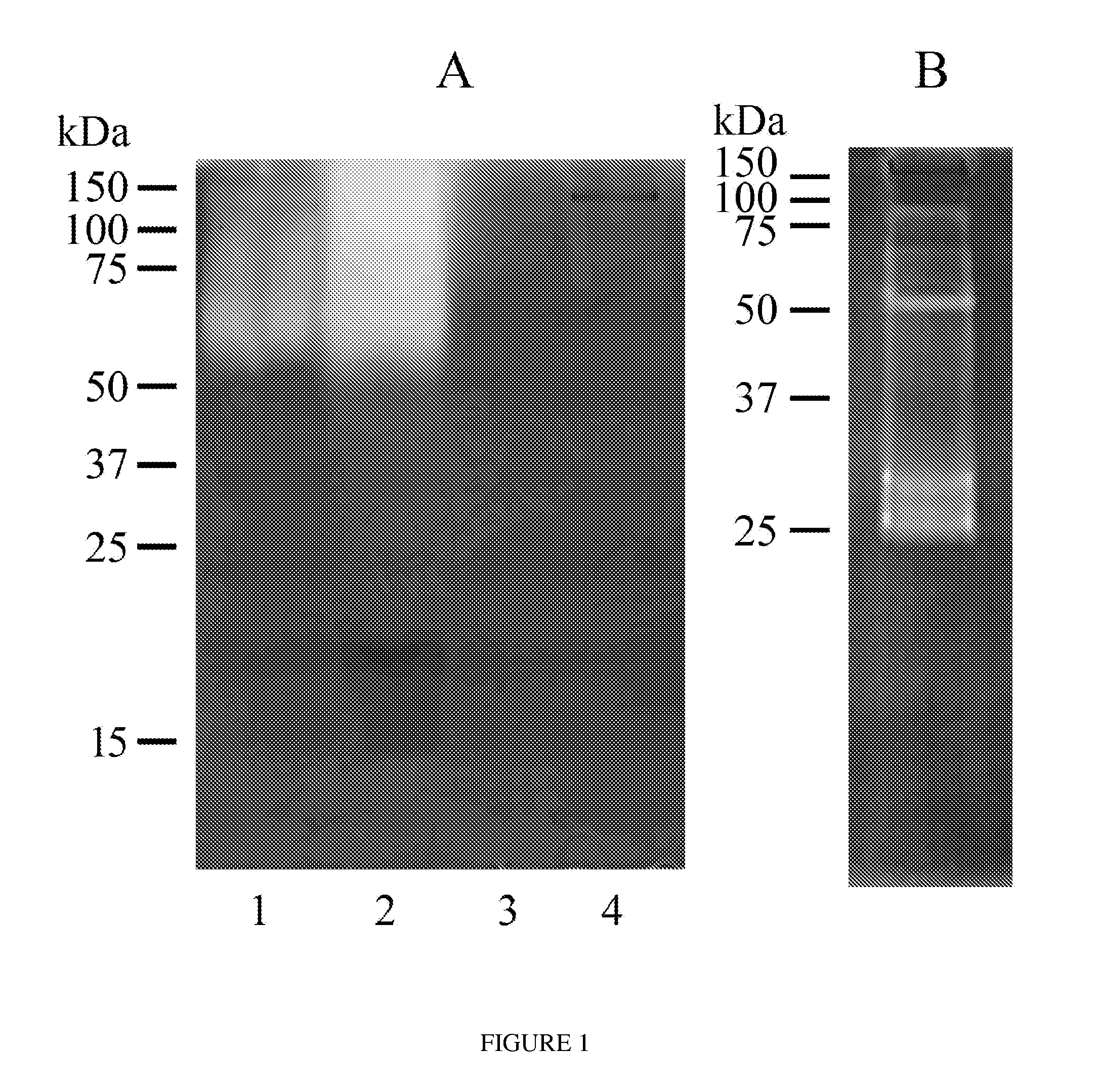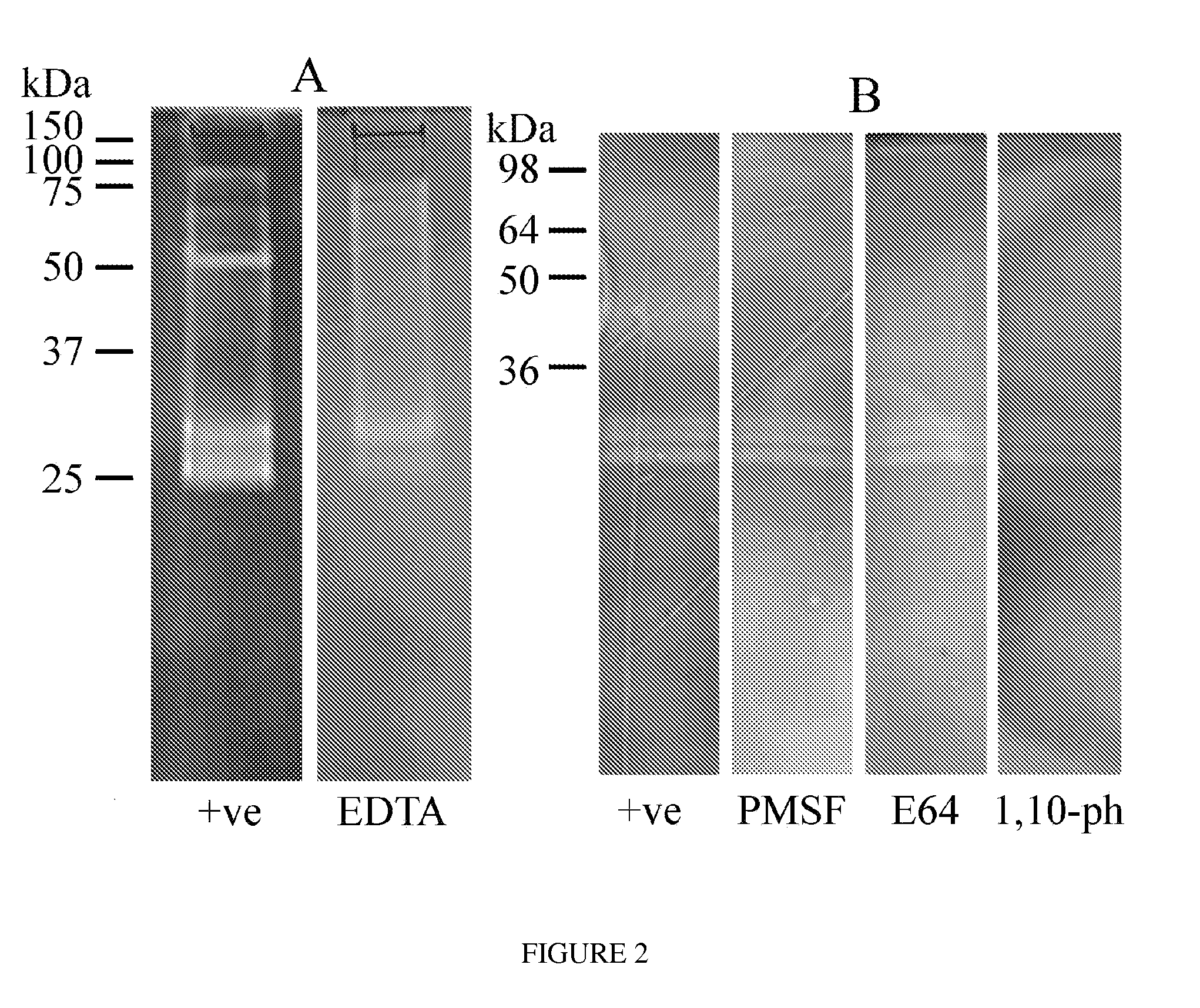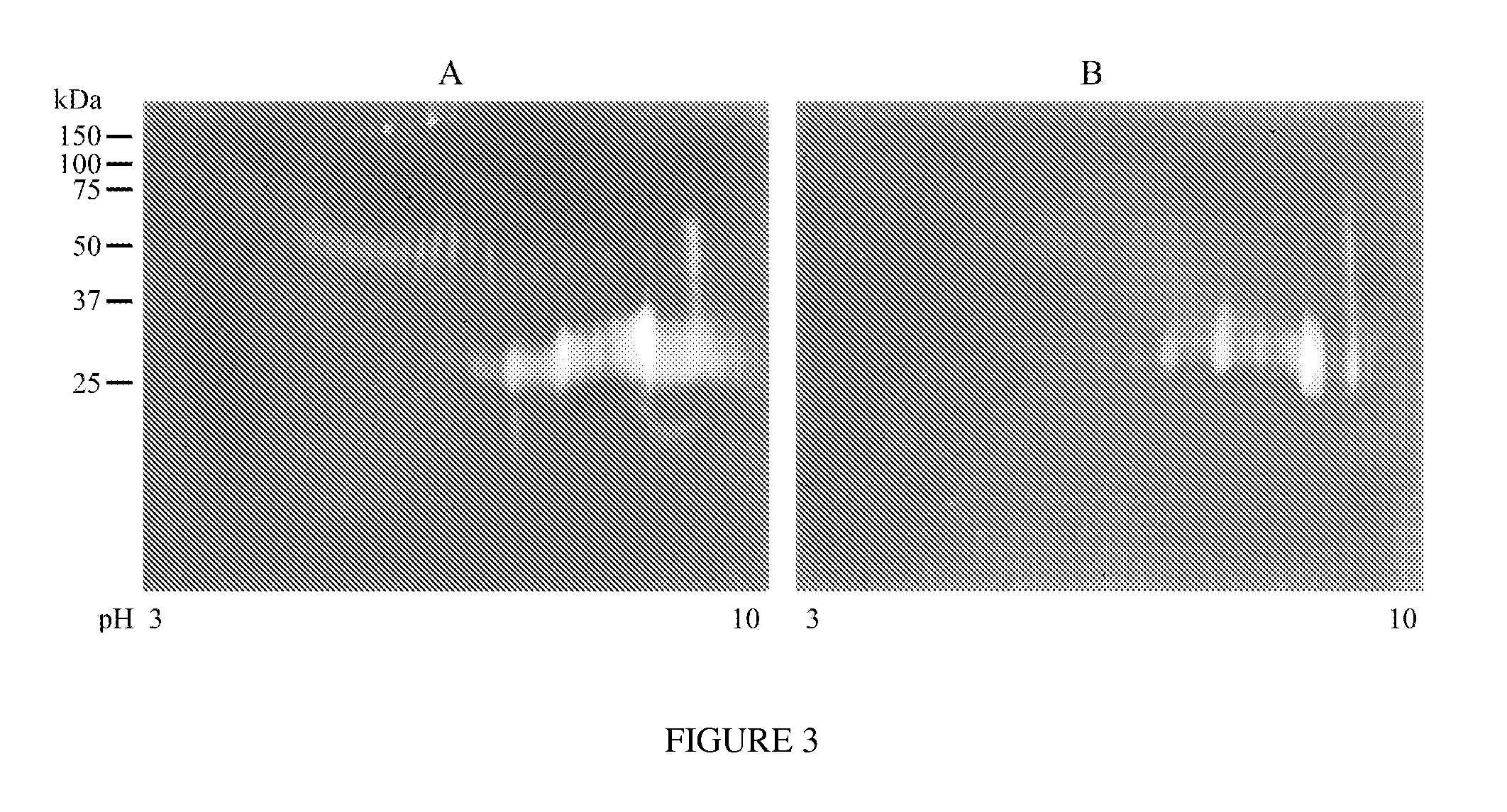Compositions and Methods for Controlling Infestation
a technology of compositions and methods, applied in the direction of instruments, biocide, heterocyclic compound active ingredients, etc., can solve the problems of external infestation of humans or animals, bites and/or infections, and significant problems in a wide variety of situations
- Summary
- Abstract
- Description
- Claims
- Application Information
AI Technical Summary
Benefits of technology
Problems solved by technology
Method used
Image
Examples
example 1
Assessment of the Mechanism of the Remodelling Event Associated with Lice Egg Hatching
[0384]The mechanism of lice egg hatching was assessed under a dissecting microscope. Female clothing lice were fed for half an hour on a rabbit before being transferred to a petri dish containing human hair. The petri dish was then placed in an incubator at 32° C.; 32% relative humidity. Within 5 hours of feeding the female lice begin to lay their eggs. Each female lays up to 10 eggs at a sitting. The eggs develop over the next 7-9 days. Within the last 12 hrs prior to hatching the following changes were observed. The eyes of the developing embryo could be clearly detected inside the egg with the developing embryo orientated so that it has its head is adjacent to the hatch flap or operculum. The embryo can be observed moving within the egg. Hatching takes place when the operculum opens and shortly thereafter the embryo begins to emerge. The head appears first followed by the thorax to which the leg...
example 2
Detection of Protease Activity in Lice Egg Extracts
[0385]Within 12 hours of hatching 50 body lice eggs (Pediculus humanus humanus) were removed from the hair and placed in a 1 mL eppendorf tube. 20 μL of distilled water was added to the unhatched eggs and the preparation incubated for 30 minutes at 32° C. The 20 μL was recovered, freeze dried and stored at −70° C. This sample was referred to as sample 1. A number of other samples were also collected as described. Sample 2 was collected by removing the unhatched louse eggs from four hairs that were approximately 3 cm long, cutting the hair into 0.5 cm lengths, and placing them into a microfuge tube containing 20 μl of distilled water and incubating at 32° C. for 30 minutes. Sample 3 was collected as for sample 2, but the hair was placed in a tube containing 10 mL of 1% sodium hypochlorite for 1 minute followed by five 1 minute washes in 25 mL of distilled water to remove the sodium hypochlorite before being incubated in a microfuge t...
example 3
Characterisation of Proteases in Egg Shell Washings
[0394]In order to evaluate the potential of lice hatching proteases in the egg shell washings as targets for inhibiting egg hatching it was first necessary to characterize the nature of the hatching proteases. Inhibitors of the 4 major classes of proteases were used to classify the proteases in the ESW.
[0395]10% SDS-PAGE gelatine substrate gels were loaded with freeze dried egg shell washings from 100 lice eggs that had been resuspended in 50 μL of non-reducing sample buffer with samples run at 10 μL per lane. Gels were run at 4° C. for 10 minutes at 10 mA per gel followed by a further 25 minutes at 15 mA per gel. Gels were then cut into strips and each strip incubated for 2×20 minutes in a 2.5% Triton-X 100 solution containing a specific inhibitor. The inhibitors used were the serine protease inhibitor PMSF (5 mM), the metalloprotease inhibitors 1,10-phenanthroline (10 mM) and EDTA (ethylenediamine tetraacetic acid) 10 mM, the aspa...
PUM
| Property | Measurement | Unit |
|---|---|---|
| Molar refractivity | aaaaa | aaaaa |
| Molar volume | aaaaa | aaaaa |
| Volume | aaaaa | aaaaa |
Abstract
Description
Claims
Application Information
 Login to View More
Login to View More - R&D
- Intellectual Property
- Life Sciences
- Materials
- Tech Scout
- Unparalleled Data Quality
- Higher Quality Content
- 60% Fewer Hallucinations
Browse by: Latest US Patents, China's latest patents, Technical Efficacy Thesaurus, Application Domain, Technology Topic, Popular Technical Reports.
© 2025 PatSnap. All rights reserved.Legal|Privacy policy|Modern Slavery Act Transparency Statement|Sitemap|About US| Contact US: help@patsnap.com



